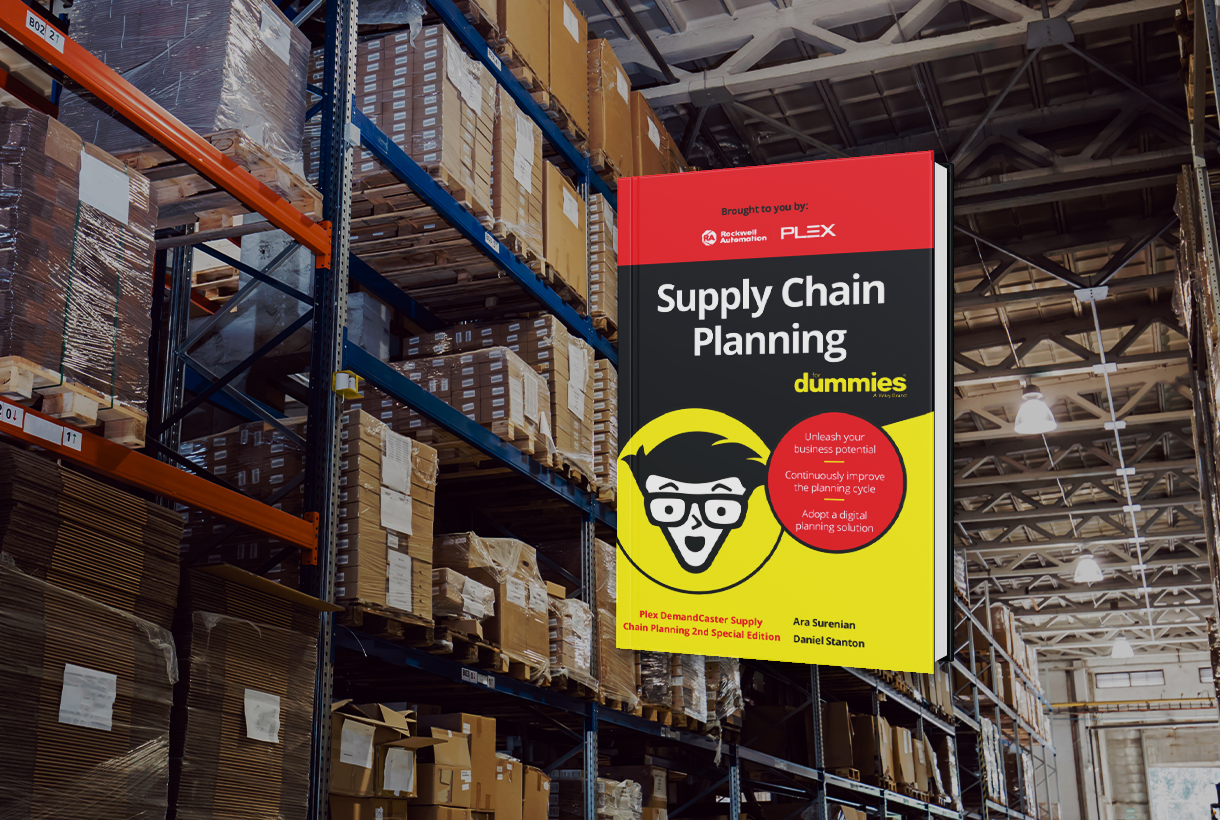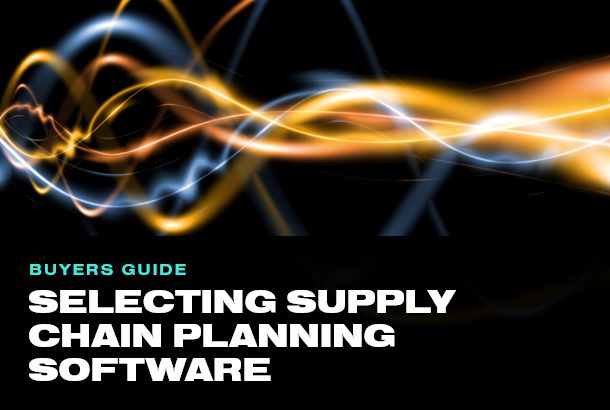What is Demand Forecasting?
Demand forecasting is a business process that estimates consumer demand for goods. The process uses sales data over time, market conditions, competitor analysis and input by experienced professionals to create a forecast that attempts to predict future behavior.
By predicting what goods and in what quantities consumers will purchase in the future, businesses can create plans to meet the demand efficiently and profitably. Demand forecasting is used to plan many functions within an enterprise. This includes financial health such as estimates of margins, cash flow and capital expenditure. It is also used to plan operations for labor, training, equipment utilization, capacity and expansion.
The problem with demand forecasting has traditionally been its reliance on intuition and the expert opinions of those within the company experienced in market behavior and performance of sales channels. Because of this subjective element, demand forecasting has been considered as much an art as a science. The reliance on subjective input impacts all downstream processes that depends upon it. The result is the introduction of uncertainty to a process that requires accurate data to produce the best forecasts possible.
What is the Difference Between Demand Forecasting and Demand Planning?
Many use the terms demand forecasting and demand planning interchangeably. However, they are different in scope and content. The demand forecast is a prediction of demand based on historical data and subjective input and is a strategic application of demand data. It may be short-term or long-term and can be used for things such as planning expansion, securing financing, setting market prices and setting overall production levels.
Demand forecasting can also be done at both an external and internal level. Externally, the forecast looks at broad market trends, changes in consumer tastes and expectations, possible disruptors and others. While internally they can be used to set specific business operations such as cash flow, manufacturing strategy, estimation of cost of goods sold (COGS) and other factors.
Forecasting may also be passive or active. Passive forecasting is done by more companies with steady growth and easily predicted demand. Active forecasting is often found in companies with a volatile demand cycle and in companies scaling or experiencing high growth.
Comparatively, demand planning is a more tactical process. Demand planning takes the macro data available in the forecast and develops a plan to operationalize it within the enterprise. It develops protocols and actions that apply the demand to the supply chain to ensure that the enterprise can meet service level expectations. In short, demand forecasting drives business decisions while demand planning drives operational issues for manufacturing and supply chain.
Why Do We Need Demand Forecasting?
Demand forecasting helps reduce risk in business activities. It is critical in making sound business decisions that impact the company’s health over time. Some of the reasons we need demand forecasting include:
- Meeting Goals – Businesses have pre-determined growth trajectories and long-term plans to ensure the company’s continued success. Demand forecasting helps them to be proactive and to adjust their long-term strategy as signals indicate.
- Financial Planning – Demand forecasting plays a significant role in budgeting for the future. Strong forecasting provides costs and revenue estimations. This allows businesses to budget and meet demand.
- Growth – By forecasting accurately, companies can see the need for expansion within a timeframe that allows them to do so cost effectively. As capital expenditures for equipment are expensive and often have a long lead time for receipt of the equipment, demand forecasting facilitates growth plans.
- Human Capital Management – Since demand forecasting considers information such as potential technology disruptors, it can help companies plan training and staffing for securing key skill sets needed for future product iterations.
- Business Decisions – As a business process, demand forecasting can help leadership make sound business decisions in everything from capacity, targeting of new markets and raw materials and vendor contracts.
Methods of Demand Forecasting
There are two methods used in demand forecasting, qualitative and quantitative. Qualitative methods are used in traditional forecasting and involve a lot of experience, intuition and subjectivity. Quantitative methods use data and analytical tools for prediction and are the types of methods used in automated demand forecasting software.
Qualitative Methods include:
- The Delphi Model – This is an iterative process where experts within certain market segments are asked to generate forecasts. The forecasts are shared and influenced by the opinion of others. The process is repeated until a consensus forecast is reached.
- Sales Force Opinion – Here, sales teams are tasked with submitting a forecast for their respective area. The forecasts are reviewed for realism and other input from senior managers and then become aggregated into a demand forecast.
- Market Research – In this technique, the company uses customer surveys to identify potential demand. The survey may include personal, demographic, and economic information. It must be controlled as a random sampling test and subjected to the same rigor before aggregating results.
Quantitative Methods Include:
- Trend Projection – This technique uses pattern detection for analyzing historical data. It is best when deployed for sales histories of over 24 months to allow for a large enough dataset.
- Barometric – Barometric demand forecasting uses present events to predict the future. It may analyze factors such as leading, lagging or concurrent economic indicators that are put into an equation to generate a forecast.
- Econometric – The econometric approach uses complex mathematical formulations to analyze data and variables that affect the data. The equation is then fin-tuned and analyzed against historical data and a forecast is generated.
The biggest benefits of demand forecasting are those unlocked using demand forecasting software. These platforms utilize quantitative analysis techniques but are agile and flexible to allow qualitative inputs. They use deep analytics and advanced algorithms to turn real time data into actionable and accurate demand forecasts.
Benefits of Automated Demand Forecasting
Traditional demand forecasting used to consist of historical data, expert intuition and some very good guessing. As a result, forecasting at this level was considered an art form. Some companies did it better, and some companies did it worse. In the end forecasts often varied wildly from future reality.
But can the art of forecasting be turned into science? Can the statistical differences be made so small they no longer matter, turning forecasting into a digital tool that helps predict the future? While the potential exists for any forecast to be impacted by unforeseen variables, today there is a much better path for demand forecasting than in the past.
Demand forecasting and planning software allows for the creation of more accurate demand forecasts. As a broad-spectrum function, demand forecasting best works when it is consensus-based to give stakeholders at all levels the confidence in the forecast to act decisively. By using near real-time and historical data, the advanced analytics available in these platforms can find trends, micro-trends and other actionable data that help build a more accurate picture of future demand.
There are many benefits when deploying demand forecasting software. These benefits include:
- Increases Supply Chain Efficiency – Demand forecasting helps not only predict the volume of sales in the future but also the timing of those sales, including seasonality. This allows for more effective management of the entire supply chain increasing its efficiency and helping managers better schedule production, warehousing and shipping. By understanding predicted spikes in demand and the products they affect, vendor negotiations can be sharpened for everything from price to lead time.
- Control Costs – Because demand forecasting looks at when demand will occur, it can be used to create better demand plans that help operations managers control costs. This includes labor utilization, variable and fixed cost overhead functions and others.
- Project Revenue – Demand forecasting software is dynamic and data-driven. Advanced algorithms are used to create more accurate revenue projections by analyzing historical and organization data alongside ERP inputs. This includes the cost of goods sold (COGS) and margins at the item level. Analysis from this projected revenue can help spur improved business decisions such as phasing out of slow-moving product categories or increased production of new product lines with higher predicted demand.
- Scenario Driven Decision-Making – Business leaders always want a “Plan B”. The ability to craft contingency plans over multiple scenarios can provide reassurance in especially volatile markets and product lines. Today’s demand forecasting software has “what-if” scenario building capabilities to help anticipate probable outcomes and build contingencies.
- Multi-Echelon Forecasting – Traditional demand forecasting was level specific. Looking at higher and lower levels of aggregation had to be done independently and then reconciled, all but assuring that errors and other inaccuracies would be baked in. Demand forecasting software now gives companies the ability to use and analyze near real-time data at multiple echelons. This powerful capability acts as a “zoom-in/zoom-out” functionality to forecast demand at the corporate, divisional, plant product group or product level. This capability is augmented by demand shaping and demand sensing data to make the most out of each view.
- Trend Analysis – Like forecasting in, trend analysis has always been an inexact endeavor. Human analysis consisted of observing obvious trends such as seasonality that can be detected easily. But with the right forecasting software, micro-trends and slow-moving trends not noticed by human eyes can be detected as well. Algorithms can render the new trends as usable data to improve the overall forecast and hone the accuracy of resulting demand plans.
- Prioritization – Not all products are created equal. Certain components and raw materials are more costly or time sensitive than others. And in the case of the food and beverage industry, this is also impacted by perishability or regulatory concerns. Demand forecasting software allows companies to utilize ABC analysis to optimize control of inventory items by category. This allows them to diversify their approach to forecasting to analyze items in tiers based on importance or cost.
The Value of Demand Forecasting
As an important part of supply chain planning, the goal of demand forecasting is to predict future demand. Companies can make better business decisions in manufacturing, finance, purchasing and other key business functions with proper demand forecasting.
Robust supply chain planning software goes beyond traditional forecasting by adding the “science” to the process. Better predictive models enable better business decisions and that is the true value of demand forecasting. It can harmonize subjective variables with near real-time data, historical sales performance, advanced algorithms, and analytics. DemandCaster provides advanced supply chain planning software that offers data-driven insight in an agile and unsiloed platform to bring this value to any supply chain.


